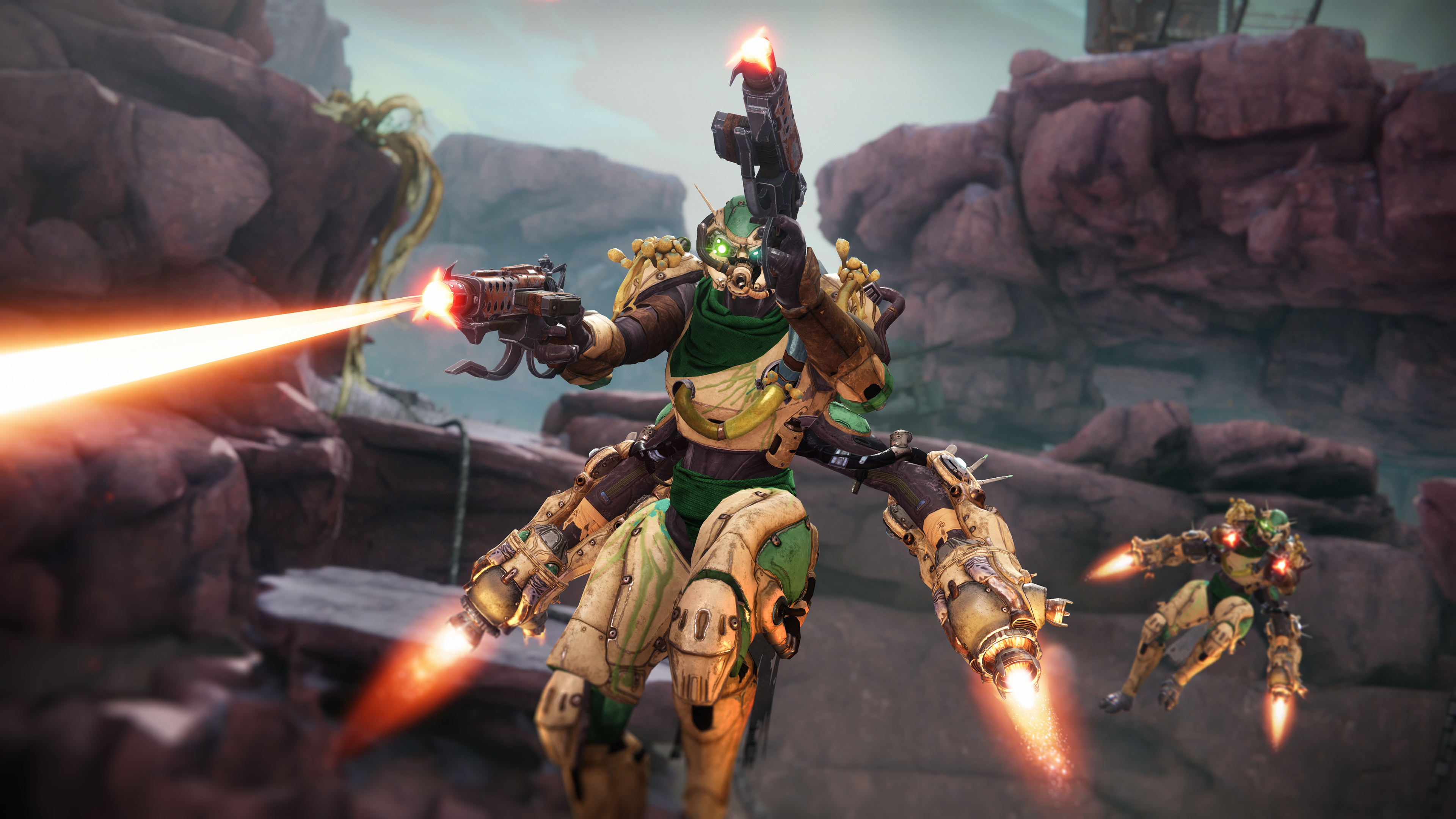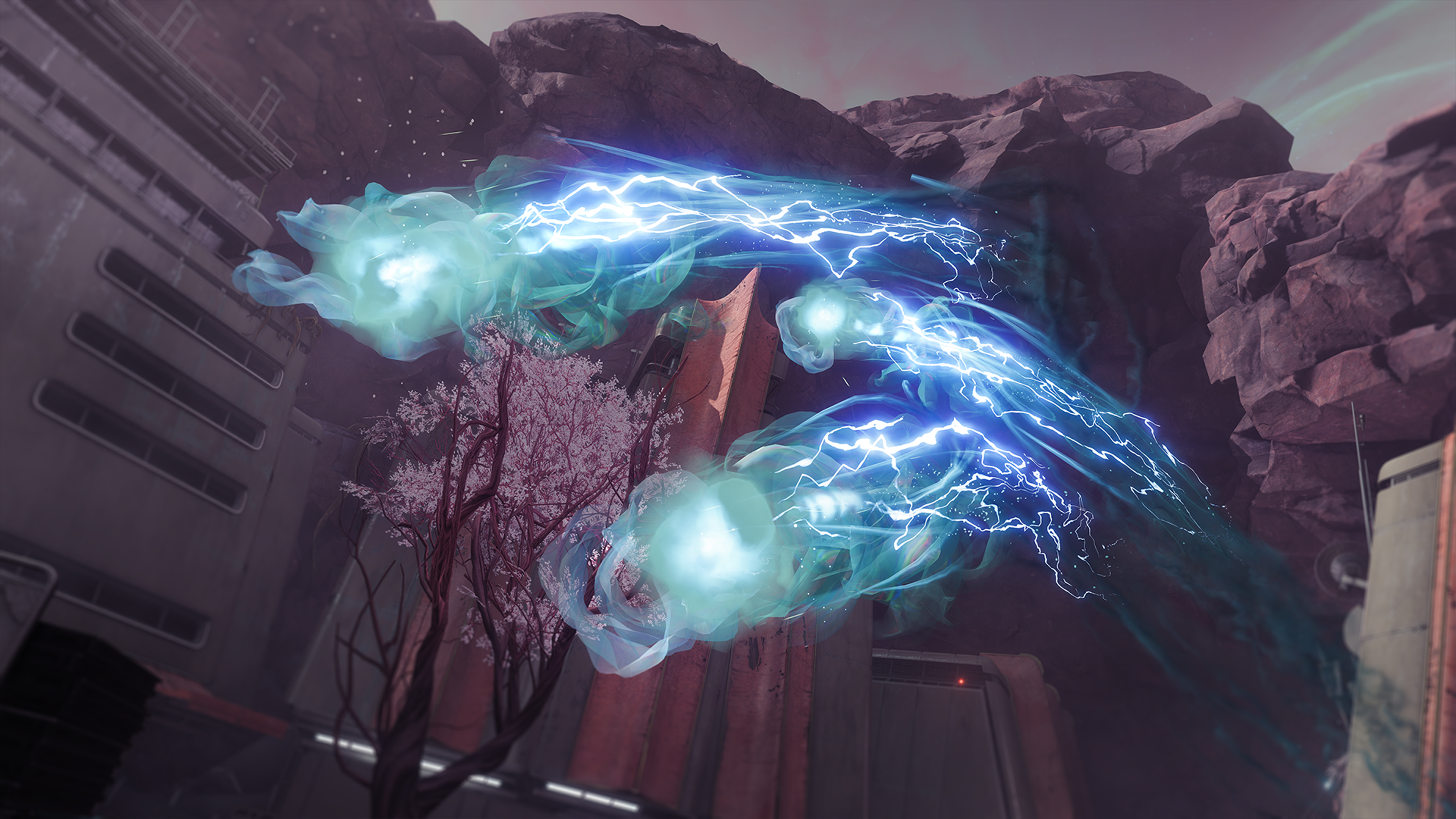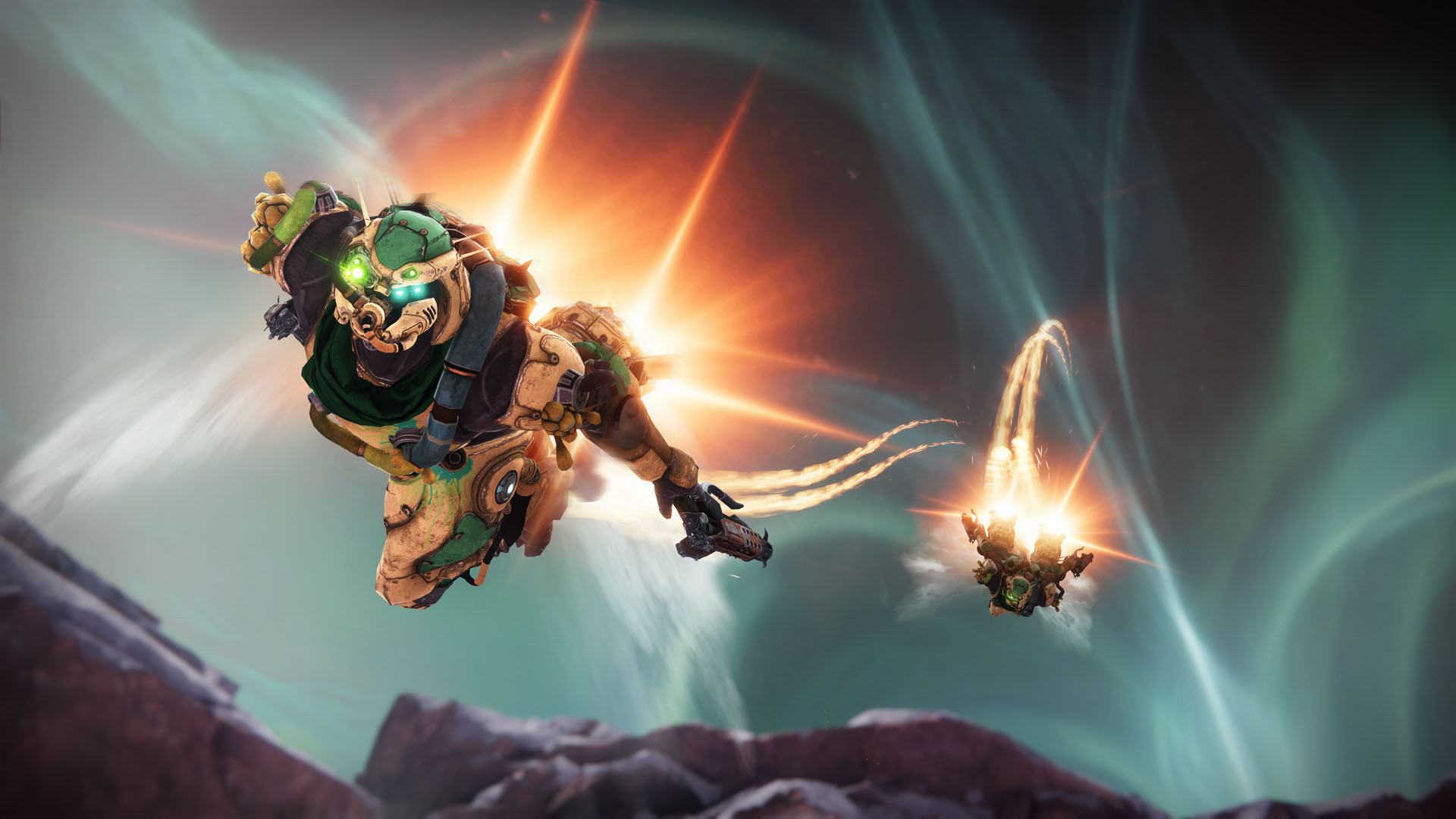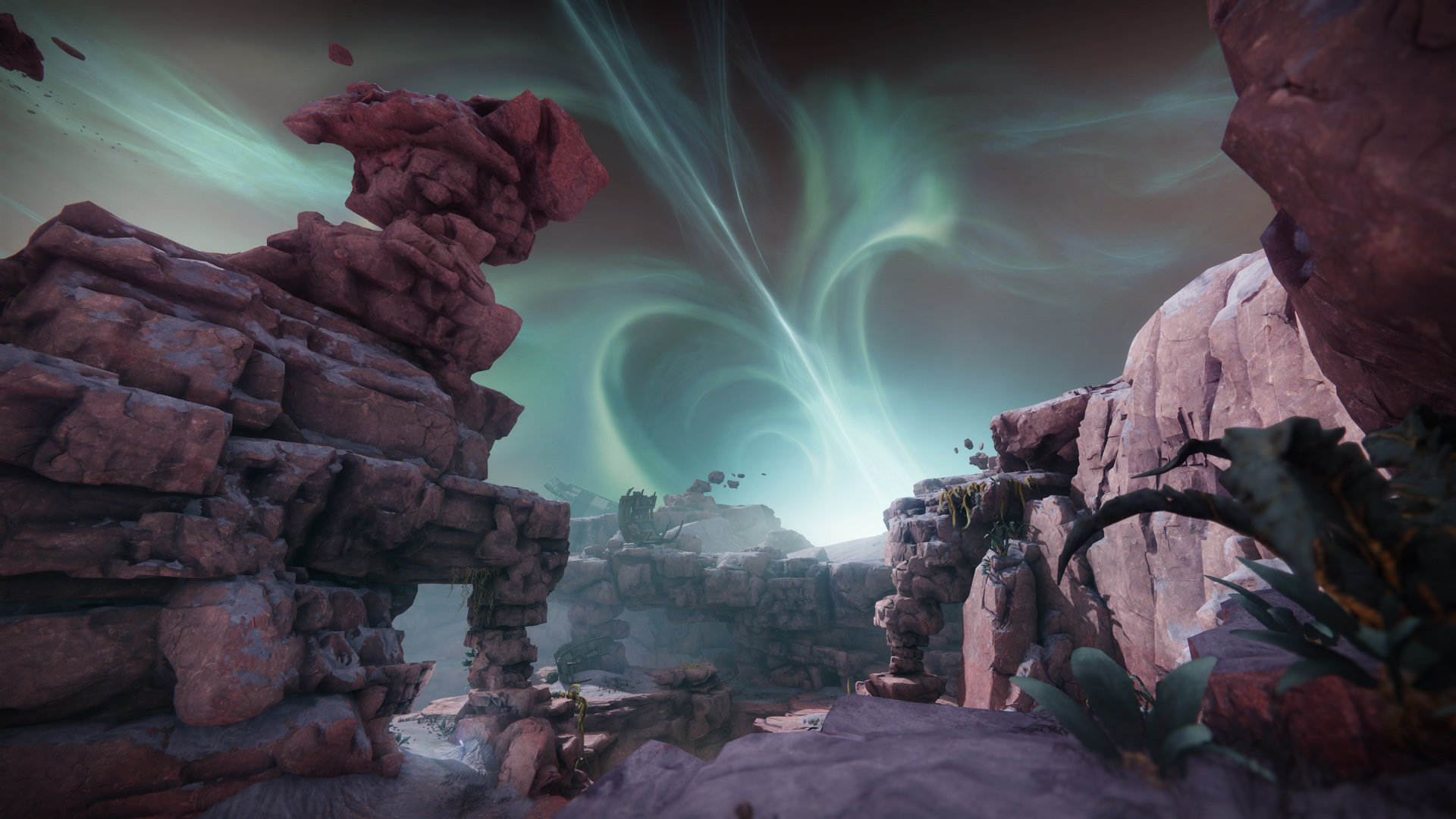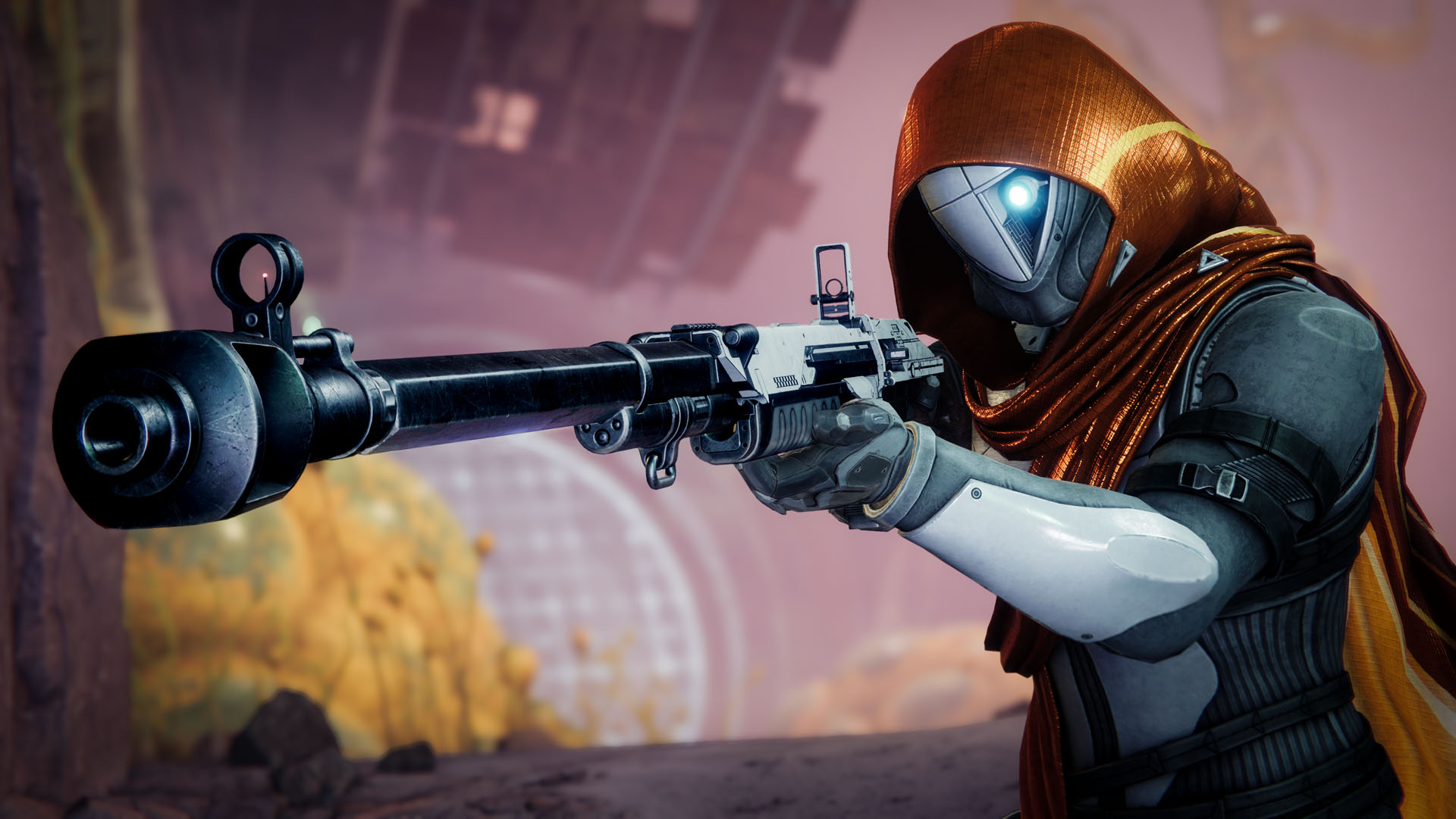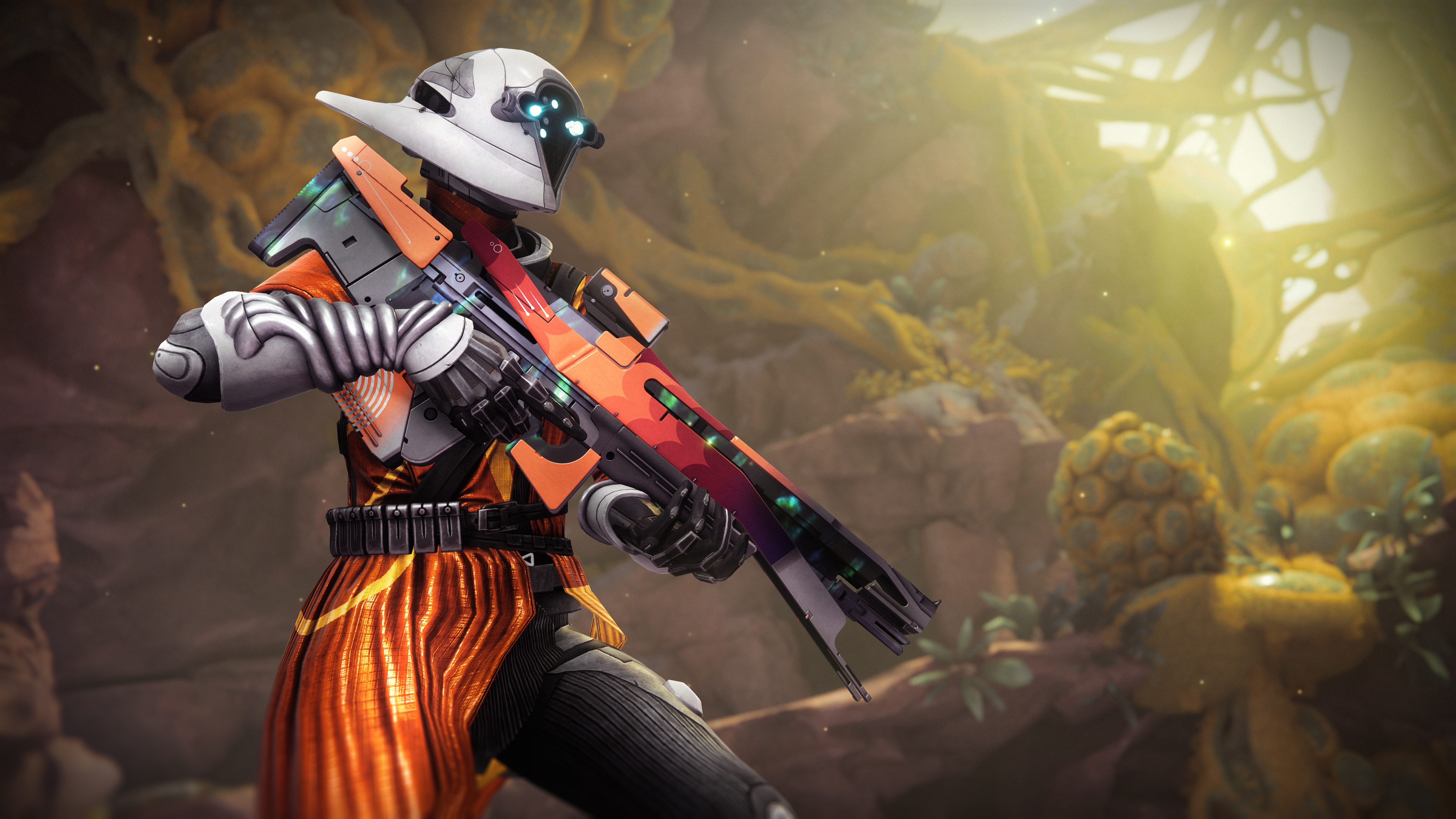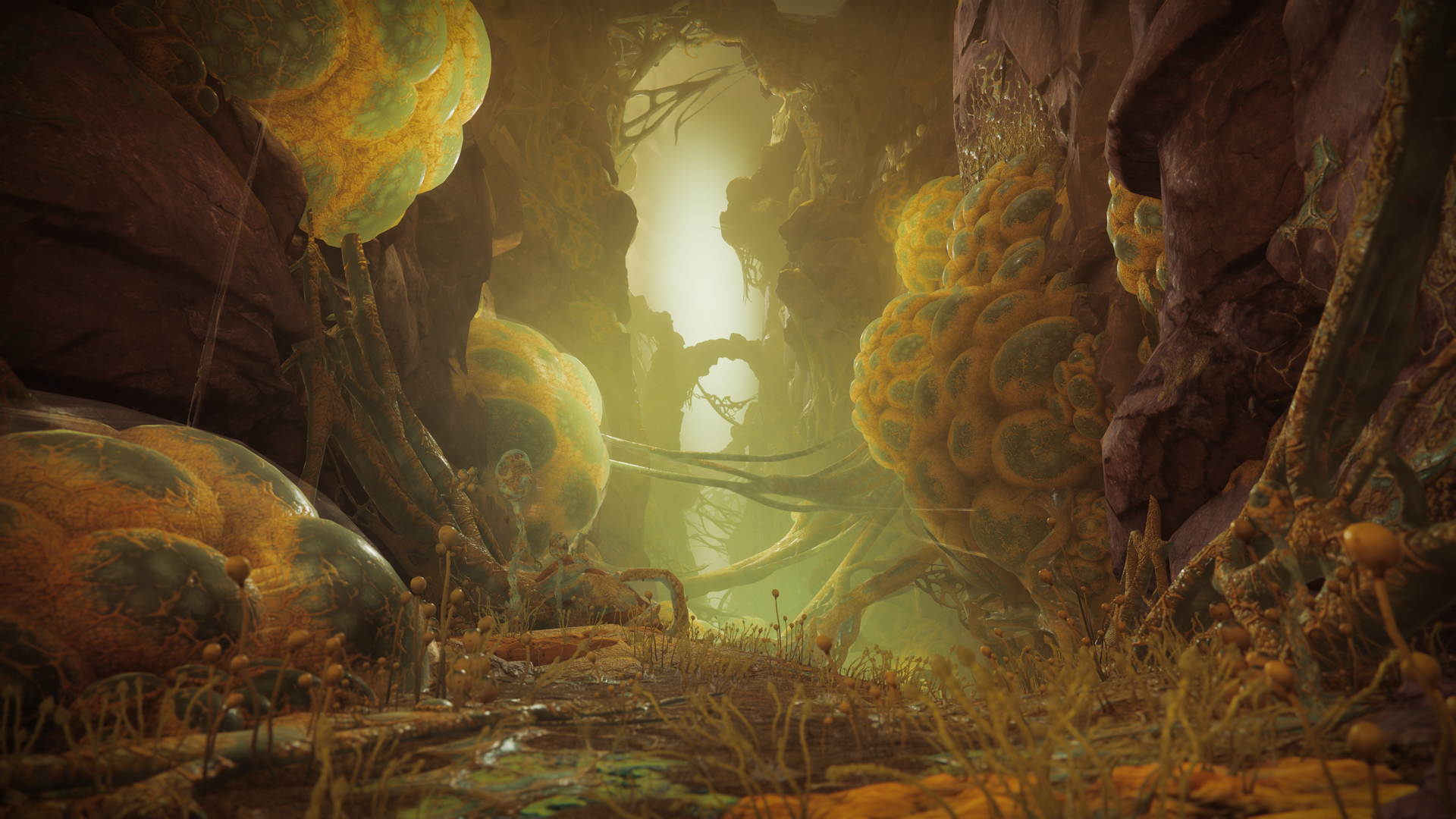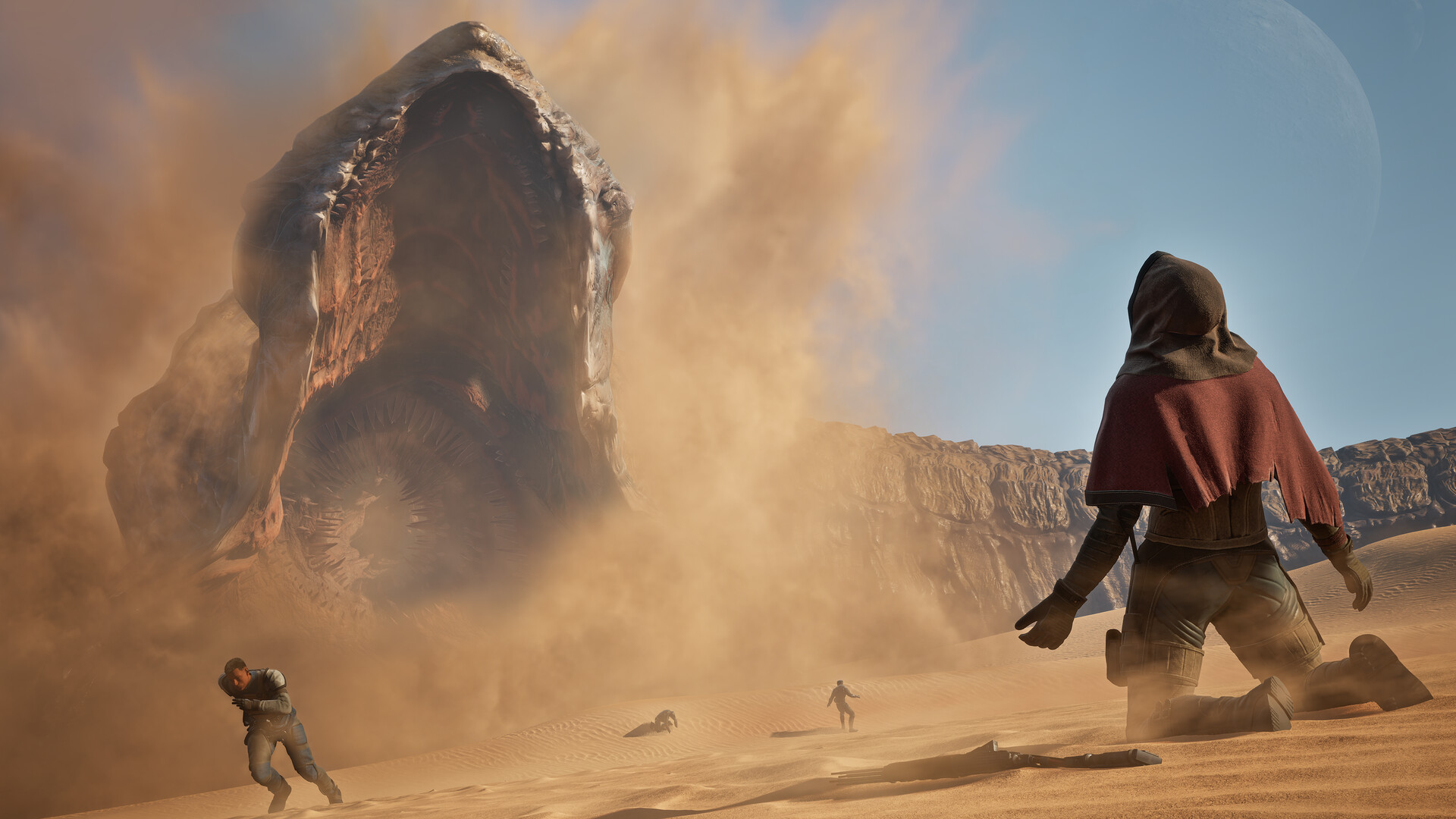
The launch of a new saga is bringing a massive shift to how Destiny 2 works.
Hurtling around pipes as an electrified Morph Ball doesn’t immediately scream Destiny 2 to me. Even so, I don’t mind the heaping of Metroid that Bungie has stirred into the mix for next month’s The Edge of Fate expansion. It’s weird, sure, but most importantly it feels like something fresh.

Looking for more on The Edge of Fate expansion? We also saw the expansion’s powerful new exotics, and spoke to Destiny 2’s game director about reinventing the formula.
A couple of weeks ago I visited Bungie HQ in Bellevue, Washington to play a build of The Edge of Fate, Destiny 2’s first major expansion since the conclusion of the series’ 10 year ‘Light & Dark’ story.
It marks the beginning of a new ongoing storyline—called the Fate saga. But while future expansions will contribute to this overarching narrative, they won’t be as closely tied together as the releases of the past few years. Bungie appears to be enjoying this newfound freedom—as you might expect given we’re about seven months out from a Star Wars-themed expansion. The studio wants to use this shift as an opportunity to dive into more weird, esoteric sci-fi concepts that bubble under the surface of the series’ lore—the concepts that first attracted me to Destiny over a third of my life ago.
The Edge of Fate begins the way most expansions do, with a mysterious call to a new world, and a cinematic mission that introduces you to a new alien environment. Kepler is a distant planet in our solar system and the staging ground for all of the weird shit going down in The Edge of Fate. The Nine, the ever-mysterious, never-explained, god-like entities that have been looming in the background for years in Destiny, are causing a commotion there.
As usual, the Guardians find themselves on a new world because of a mysterious message, and are greeted by slightly upgraded versions of their old foes. The Fallen have a new jetpack enemy that adds some real vertically to fights where they appear, and can even swoop down to boop you around with their boosters. The Vex have a new unit of swarming drones which, like the Husks from the Dread faction, force you to be cautious and accurate when taking them down as killing the lead drone will trigger the remaining ones to fly at you and explode.
As you explore Kepler, it becomes less “classic Destiny,” and much more Metroid Prime with fusion rifles.
But with the Edge of Fate and Kepler, there’s also a bizarre third party: Lodi. This nerd with black Ray-Bans and a handgun is here looking for answers of his own. But he doesn’t talk like a normal Destiny character who lives in a world where science has truly morphed into magic. Instead he talks like… us. This creates a really interesting dynamic between the player, the Guardians, and Lodi. He’s a fish out of water in their world, but feels more relatable to us normal humans than any other character in the Destiny franchise.
Don’t worry too much about a normal guy with glasses bringing boring reality into the series, as there are also what appear to be L Trains embedded into the flora of Kepler, which act as portals that take you into missions. As far as space-weirdness and setup, The Edge of Fate is still classic Destiny.
I’m able to huff some weird spores to telekinetically move environmental pieces around—like Tony Hawk cosplaying as Magneto.
As you explore Kepler, both in the first mission and beyond, it becomes less “classic Destiny,” and much more Metroid Prime with fusion rifles. From the goopy, insect-like flora and fauna on the planet, to the synthy soundtrack, to the damn Morph Ball. “We’re not trying to hide the inspiration,” said Tyson Green, game director. It’s a love letter, and that love shines through as I roll around the feet of stomping Vex Wyverns to Super Bomb some nearby confluxes, disabling their shields. The trick Bungie plays here is that the second you pop out of the lighting ball—called Matterspark—you’re suddenly back to good-ol’-reliable FPS Destiny.
Prime location
This creates a kind of flow state between the Destiny that you know and the Destiny that only exists on Kepler. And as soon as you’ve mastered turning into an orb to solve a puzzle mid-combat, Bungie adds another tool to the arsenal. Now, not only am I able to interact with a special item in the environment that transforms me into the Matterspark, I’m able to spawn a cannon in certain areas that acts as a makeshift portal gun. Eventually I’m able to huff some weird spores and gain the power to telekinetically move environmental pieces around in order to make bridges or ramps—like Tony Hawk cosplaying as Magneto.
These new abilities have been created in service to environmental puzzles that require increasing thought and timing to solve. But it’s the way Bungie has layered these new tools on top of one another that really delights me.
In classic metroidvania style, the Matterspark ability takes a backseat as soon as I get the teleporter cannon, with a few puzzles designed to make sure I’m thinking with portals. But, slowly, Bungie starts to reintroduce Matterspark into my kit. Now, instead of just using the cannon to teleport to a new area, I’m teleporting to an area that I can’t leave—that is until I transform into the Matterspark and roll through a tiny hole too big for my Guardian to fit through.
Bungie has never failed to offer this best-in-class gunplay with Destiny 2—but after 10 years, the game around that gunplay felt stale.
All of these abilities come together very nicely in my favorite mission from the expansion. Without getting into spoilers, it required me to restart a big generator on Kepler. But to do that, I needed to head into some nearby side rooms to fix multiple pieces of the machine, which required completing increasingly complex puzzles.
In one of the final areas, before circling back to the big fight in front of the main generator, I had to complete what I counted as a 13-step puzzle in order to spawn the final boss. While the puzzle as a whole wasn’t particularly confusing or difficult, it was exciting. It got me to think about my environment differently. It took me someplace new and asked me to solve something that didn’t feel like a Destiny puzzle at all.
Bungie does a nice job mixing this new gameplay flow up as well. Sometimes I was solving a puzzle in an empty room with time to think. Other times I was just blasting through environments with nary a puzzle to solve. And, most of the time, I was doing both at once, killing some enemies before diving into Matterspark to charge up a generator before popping out and shotgunning a Fallen Captain.
Fact of the Matterspark
In the section I played, I was impressed with how engaged I was regardless of whether I was focusing on a puzzle, combat, or both. Bungie could obviously get that mix wrong in other parts of the campaign I haven’t seen, but I was never more than a few seconds away from shooting something by the time I was all puzzled out.
Bungie has never failed to offer this best-in-class gunplay with Destiny 2—it’s why those of us still here have stuck around. But after 10 years, the game around that gunplay feels stale. Even missions that I loved back in The Witch Queen, though high quality, couldn’t exactly be described as innovative. But with the addition of Matterspark and the other Kepler-exclusive abilities, Bungie’s developers have managed to add something that feels new—despite being borrowed from other games I love—without sacrificing the core of Destiny’s DNA.
These abilities do create an interesting kind of struggle within me—one that I’m still not sure I’ve settled weeks after my play session. The Kepler abilities are very cool and make the planet feel unique, but there’s a sadness that comes with not being able to play with them the moment you step onto an older destination.
On one hand, keeping them unique to Kepler ensures that the destination and experience of Edge of Fate feels special and unique forever. Matterspark is inherently tied to Kepler in a way that Grapple isn’t tied to Neomuna, and that’s actually quite interesting. It’s easy to imagine a world, several expansions from now, where loading into different Strikes feels dramatically different because each planet has its own, cute mechanics that make it special.
Matterspark is inherently tied to Kepler in a way that Grapple isn’t tied to Neomuna, and that’s actually quite interesting.
On the other hand, Destiny is a massive game, and most of my time in Destiny 2’s Year of Prophecy won’t be spent on Kepler. Thankfully, Green told me that the studio will be continuing to build off of the Guardian’s power sets in the future (although he wasn’t specific about when Prismatic, for example, will be seeing an upgrade).
But would I be more excited overall if part of The Edge of Fate was a class ability override that let me turn into the Morph Ball? I’m not certain. It’s a balance Bungie is going to have to get right, otherwise these bespoke locations could risk making the rest of the game feel stale by comparison. For now, it really helps set Kepler apart from other expansion destinations, and I think I’m going to end up loving that.
Even though I’ve only played a few hours of The Edge of Fate’s campaign, I find myself suddenly excited for future expansions like Renegades. I’m even starting to develop faith that a Star Wars-themed expansion might be more than just driving across a Tattoine-at-home planet on a Sparrow while Drifter knowingly asks me over the radio if I know that a Parsec is a unit of measurement, not time.
Part of that hope comes from the The Edge of Fate campaign, but it’s also because of the sheer number of changes coming to the rest of the Destiny 2 “hobby,” as Bungie’s developers like to call it.
Rip and tier
Those systemic changes are extensive, but the result is that Destiny 2’s loot chase is going to be more of a grind than it has been in years past. But before you shut this page with a scoff, let me add that Bungie’s intention is to make that grind more worthwhile and deterministic than ever before. More chase, but better rewards to show for it—which brings us to the tier system.
All new gear now drops as part of a tiered loot system—rated one to five—with higher tier weapons offering not only upgraded perks, but raw stat increases over their lower-tier cousins. Higher tier armor will also guarantee a better stat band, meaning that getting a higher tier piece of loot will almost always indicate that it’s an improvement on what you have—at least mathematically.
However, playing with some of these tier 5 items, I wasn’t really able to feel that difference during my admittedly limited playtime. I still need a bit of convincing that these items are actually going to be noticeably different from the other gear, at least beyond the fashion incentive—tier 5 weapons come with a special blue glow and nice looking on-kill effect.
Longtime Guardians have a lot of great weapons that they’ve accumulated over the years. Just speaking personally, I’m still lugging around my crafted Commemoration—despite the heavy nerf to Reconstruction—and it’s going to take something astounding to make me put it down. Sure, Bungie can “incentivize” players by asking them to use weapons with the “NEW” tag on them for a bit of a damage boost in essentially all activities (similar to the overcharge system in current D2), but any new gun will do that, not just their T5 versions.
While I am skeptical here, I have faith that these high tier weapons won’t just be the second coming of Adepts, weapons that are significantly more painful to grind for in Destiny 2 with nearly no major benefits (and typically an uglier base shader, I must say). That’s because of the aforementioned mathematical, statistical benefits that come from wielding T5 gear. Tier 5 weapons will have better reload, better range, better everything, just because they’re tier 5.
Tier 5 weapons will have better reload, better range, better everything.
That kind of statistical improvement is especially hard to feel in a preview environment where you’re not using your own setup that you’re used to at home, and jumping forward and backward in time every few hours. It wouldn’t surprise me at all if the first time I put my hands on a tier 5 at home and compared the stats on a tier 4 of the same roll, that I would be able to feel a meaningful difference. But it’s something I’ll be keeping a serious eye on at launch.
One aspect of tier 5s that is definitely an improvement over Adepts is the acquisition method. Getting these high tier items isn’t like getting holofoils in Rite of the Nine or Into the Light. More than just luck, higher tier items come by increasing your average power level and ascending the different difficulty tiers—far more similar to Diablo 4 than to the current leveling system in Destiny 2. Plus, tier 5s have three enhanced perks and multiple enhanced barrels and magazines to choose from, making the likelihood that you actually get the roll you want much higher.
One thing that I was really delighted to see with Edge of Fate is Bungie doubling down on new archetypes for weapons. Rocket sidearms and healing auto rifles have been such a fun infusion to the game, and really adds some variety to the loot pool that keeps the game fresh. Without knowing exactly how development works at Bungie, it also seems like the studio is able to create these goofy spinoff archetypes much faster than whole new weapon classes, like Glaives.
There are actually a few new weapon archetypes in The Edge of Fate, but the wackiest ones are definitely the rocket pulse rifle and the spread shot hand cannon.
The rocket pulse functions like a long-range, high-damage, burst-fire version of the rocket sidearm. The one I was able to play with absolutely blasted down high-health enemies from a great distance, and was even good for taking out chunks of boss health in the Legendary campaign. It chewed through ammo, however, so it’s not something I’d use on lower tier enemies the way I do my rocket sidearms. The high damage and low ammo capacity make it a great companion to machine guns.
The spread shot hand cannon is definitely less good than the rocket pulse (at least in the PvE stuff I tried, although I heard PvP players at the event saying it was extremely strong, so your mileage may vary), but that’s largely because of its range. The spread shot hand cannon fires like a small shotgun, almost like the Mauler from Bungie’s Halo days. It uses primary ammo and will absolutely obliterate anything in your way. But the damage doesn’t just fall off at a very short range, it deals zero damage at medium range or beyond. I couldn’t even hit some of the buttons you shoot to change settings in the new firing range with it because they were too far away. Maybe it’s just my playstyle, but I was having trouble figuring out what kind of loadout I’d want to use it for without running double primaries—which, as we all know, is a sin in this post-Forsaken world.
As you complete more and more difficult activities, you’ll get better rewards dropping at higher Power levels, which, in turn, allow you to fish for better loot by completing even more difficult activities. All of this happens via what Bungie is calling the Portal, which is essentially a hopper where you can select any relevant activity in the game—easily jumping into a matchmade playlist or fully customizing the difficulty to increase your score and, therefore, your reward.
With all these new tiers of rewards, it’s easy to imagine that grinding for that perfect version of an armor piece or a tier 5 weapon with all the perks you want on it, will be harder than ever. But as a tradeoff for adding more grind, Bungie has made it easier to actually get what you want.
Certain playlists and missions have guaranteed rewards that rotate daily. If The Whisper is offering you a guaranteed drop of the incredible new rocket pulse rifle, you can do it over, and over, and over again until you get your god roll. This is especially good considering that armor is now something you’ll want to grind for, as it comes with a stat archetype and set bonuses—which give unique effects while wearing two pieces or four pieces of a set, meaning you can mix and match two set bonuses while also using an exotic. Getting the gear and rolls you want has never been easier, but you have to put in the work to be powerful enough to grind for a tier 5 weapon in the first place.
I imagine more casual Destiny fans will be happy enough with tier 3 or tier 4 loot, but there’s also a real danger that the community will deem anything below tier 5 as trash, much as in the same way Diablo plays won’t be caught dead using anything below Ancestral gear a week into a new season.
As someone who is absolutely sick of a lot of the older Strikes and activities in the game, the Portal feels like a meaningful way to revive stagnant missions and make them fun again. Destiny has long suffered from a small pool of repeatable activities that have gotten very boring for veterans, while all of the newer, fresher seasonal offerings are removed at the end of each year.
Thinking with Portal
The Portal not only comes with a ton of new modifiers to spruce up some of that old stuff, but it’s designed to rotate new things in and out more frequently—and don’t worry, Bungie assured me that they’re moving away from content that rotates out forever. The Whisper is an incredible mission that I love dearly, and I’ve wished I had more reasons to run it now that my Whisper of the Worm is fully kitted out. Now, not only do I have a reason to run it for new and relevant gear, by the time I get sick of it, it’ll hopefully get swapped out for something I haven’t played in a long time. Sure I don’t like a mission like Kell’s Fall nearly as much, but it’ll still be nice to have something fresh to play while The Whisper takes a back seat for a bit.
As someone who has really enjoyed the ride for the last decade, I have to admit that some things I saw—mostly the new tiered items—left me a bit worried. But I recognize that fear in myself as a fear of change. On paper, the changes excite me, but it’s going to be months—potentially not until March of next year, when the mid-season update for Renegades hits—before players truly grasp just how different the game has become, which changes have helped, and which may be misguided.
All of these changes, even the ones I am unsure if I’ll like, seem aimed at improving the game for the long haul. The loop of Destiny is fundamentally different, and that does freak me out. But the game’s current loop is, in a way, nonexistent. Destiny 2 has been all about checklists for a long time: Get the god roll of a gun I barely care about, check it off my list, throw it in the Vault, never take it out again. I’ve obviously enjoyed doing that quite a bit over the years, but there is a certain “what is it all even for” that has nagged at every Destiny player I know over the last several expansions. Bungie is finally giving us a sense of progression that isn’t just “thank Christ I finished enough bounties to compete in Grandmaster Nightfalls this season”.
I am beyond certain that there will be things in The Edge of Fate’s overhaul that I do not like six months from now, and changes to the game that I will wish would go back to the way they were. With so many changes, it would be almost impossible for Bungie to get it 100% right on the first try. But I’m just happy it’s changing in a big, meaningful way for the first time in years. Good or bad, Destiny 2 will, at the very least, feel new again when The Edge of Fate launches on July 15.

